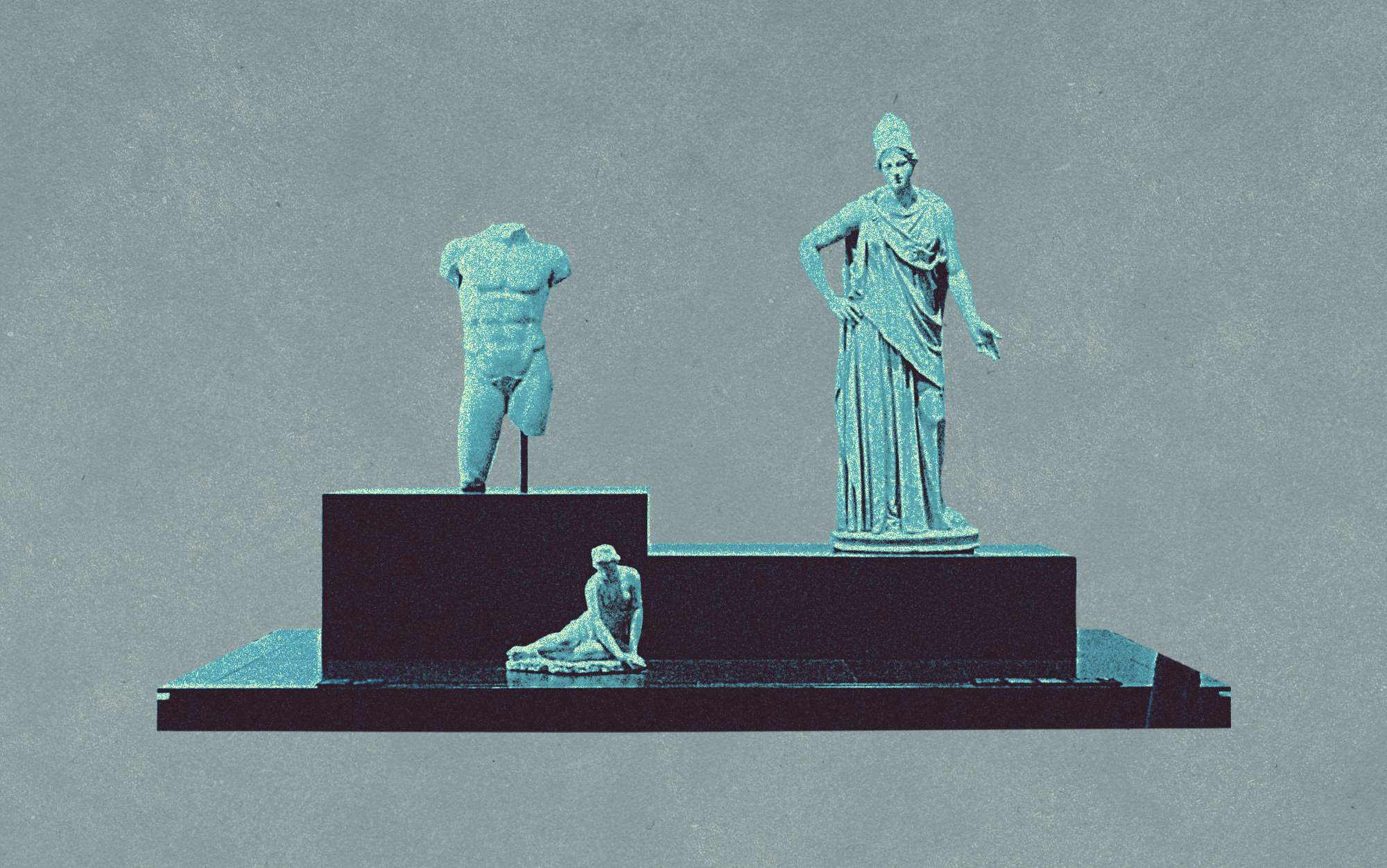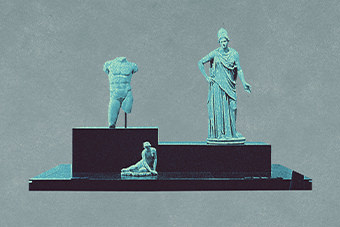Before 2009, the Ranchi Museum was housed in the premises of the Tribal Research Institute in Morabadi. After the establishment of the new state of Jharkhand, efforts were made towards building a State Museum to highlight and celebrate the local heritage. Inaugurated by the then Vice President of India, Mohammad Hamid Ansari, on September 10, 2009, the museum houses many historical artefacts as well as modern-day art pieces created by renowned artists from all over Jharkhand. The Museum is divided into four distinct galleries—Ethnological, Sculptural, Archeological, and Painting. The two-storeyed building might appear confusing at first, but there is a logical structure to it. The first things one notices when entering the museum complex are the colourful and monochromatic murals on the walls, which recreate certain stories of the past; while the semicircular series of columns on which the sculptures are mounted indicate the stages in the evolution of humankind. Apart from the Ethnological gallery and the Sculptural gallery, the first floor also houses the administrative offices and a library. A quick look into the library reveals a collection of interesting and informative books and booklets available for reading to all the visitors. The Ethnological gallery has dioramas of the different tribes of Jharkhand, some memorabilia, traditional tribal jewellery, and traditional musical instruments. The Sculptural gallery displays historical artefacts and architectural fragments which predominantly represent the medieval period (roughly 7th/8th century to 13th/14th century AD). While most of these were excavated in Jharkhand, some of the artefacts have been brought from other states. Majority of the artefacts seem related to the three major religious strands—Buddhism, Jainism, and Hinduism. They were discovered in Harina, Ranchi and Ichagarh, Singhbhum. The Painting gallery on the second floor displays a collection of art created during the 34th National Games in 2011. It was an attempt made by different artists to commemorate the event. The themes of the paintings include: The Spirit of Sports, Cultural Harmony Through Sportspersonship, The Power of Youth, and The Social-cultural Fabric of Jharkhand. The Archeological gallery is the most distinct in terms of its contents. It houses many artefacts unearthed during the State Department-led excavation in 2007–09 at Khukhragarh (Ranchi District). It also displays pottery relics from different parts of the country across different eras. Another section displays a sizable collection of coins and manuscripts, from collections of private citizens which were donated to the Government.
More Information
Getting there
The public transport of the city is mostly reliant on the shared autos (Vikram/Tempo) that run from one Chowk to the other. If one is feeling lucky and has some time on their hands, city buses under the Ranchi Municipal Corporation are also an option to travel around the city on a budget. Shorter distances can be covered using cycle rickshaws and battery operated Tuk-Tuk(s). Moreover, the services of Ola Cabs have become more than satisfactory and accessible in the recent times.
Average duration of visit
3-4 hours
Museum administered by
State Government
Updated
Quick Facts
Address:
Hotwar Khelgaon Mega Sports Complex
Visiting Time:
Sunday: 11.30 am - 4.30 pm
Monday: Closed
Tuesday: 11.30 am - 4.30 pm
Wednesday: 11.30 am - 4.30 pm
Thursday: 11.30 am - 4.30 pm
Friday: 11.30 am - 4.30 pm
Saturday: 11.30 am - 4.30 pm
The Museum remains closed on public holidays.



